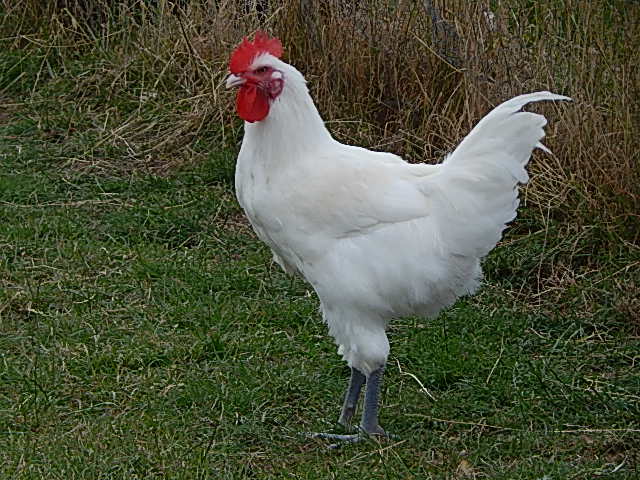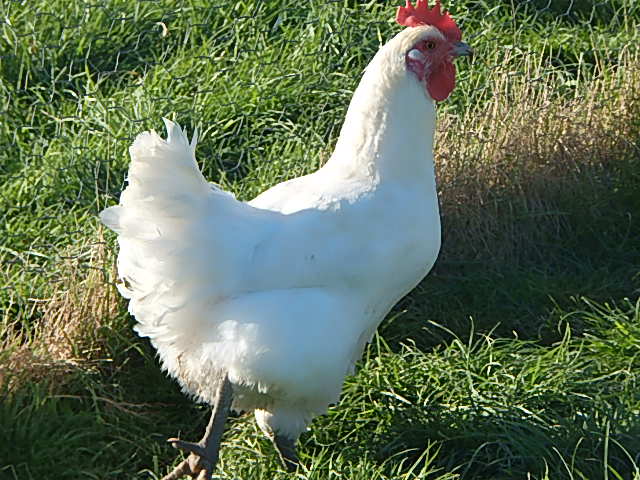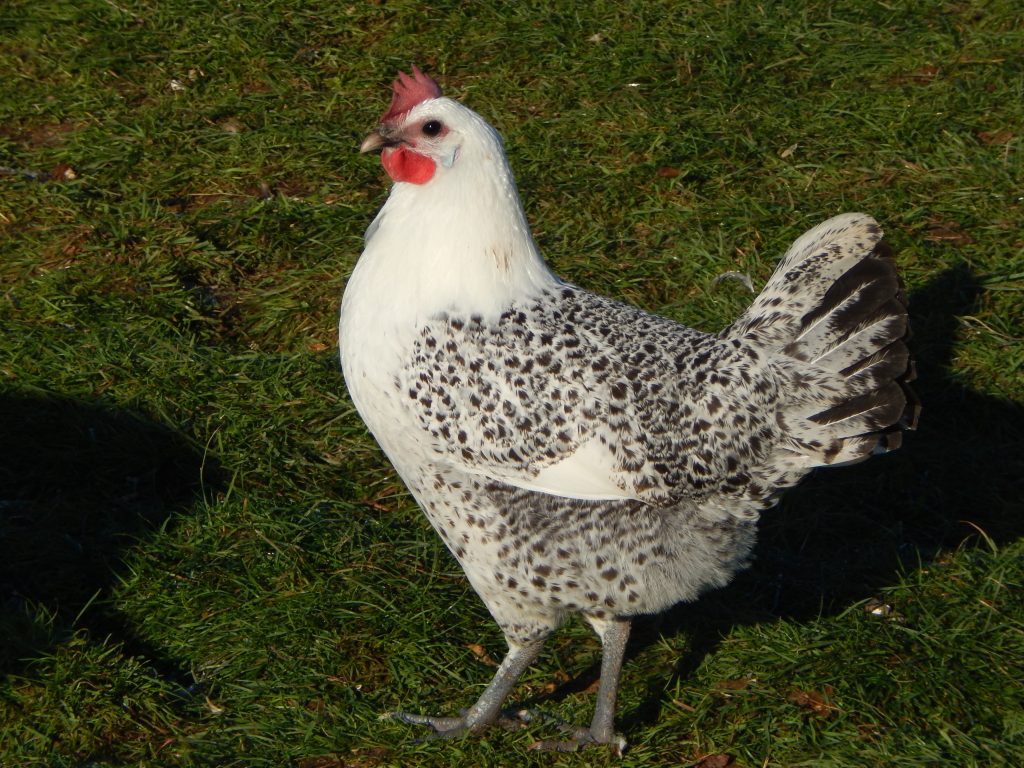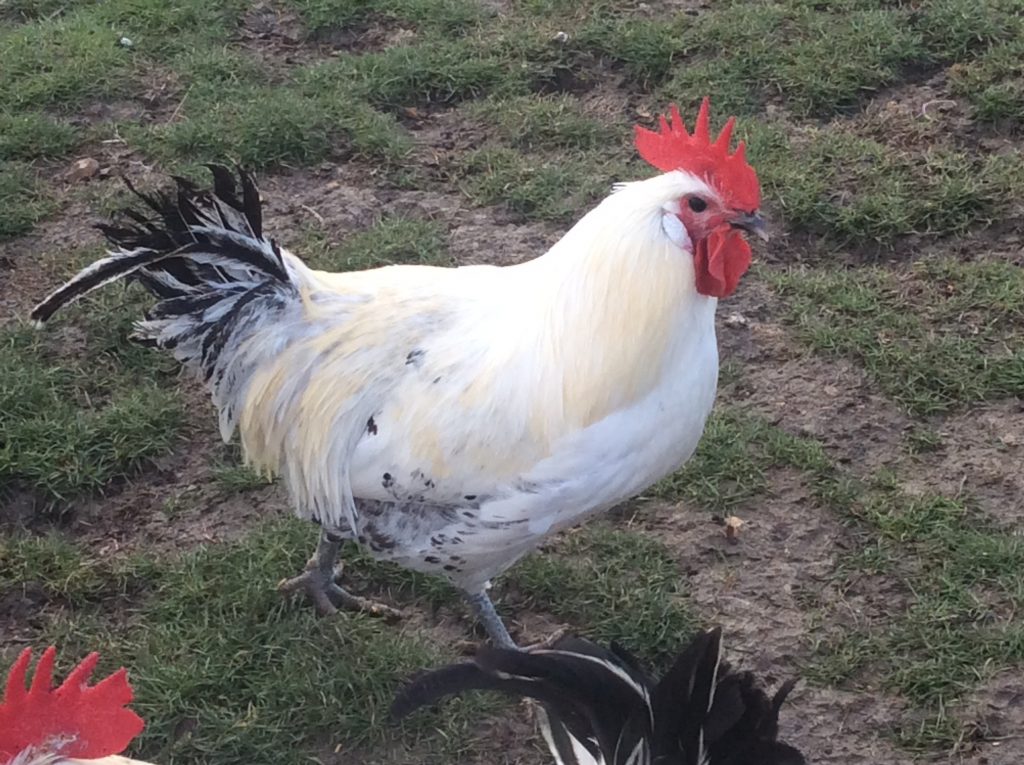Gauloise
The Bresse Gauloise is a French breed of domestic chicken. It originates in the historic region and former province of Bresse, in the regions of Rhône-Alpes, Bourgogne and Franche-Comté, in eastern France. Because of legal restrictions on the use of the name, only white chickens raised within that area may be called “Bresse”; outside it, they are given the name “Gauloise”;
The first documentation for the chickens of Bresse reportedly dates from 12 November 1591, when the citizens of Bourg presented two dozen birds to Joachim de Rye, Marquis de Treffort. In the early nineteenth century, the lawyer, politician, epicure and gastronome Jean Anthelme Brillat-Savarin (1755–1826), who was born at Belley in the Ain, is supposed to have described the Bresse chicken as “the queen of poultry, the poultry of kings”.
Like the La Flèche, which was raised and fattened in a similar fashion, the Bresse chicken had high standing in the market. Nevertheless, by about 1900 the breed had virtually disappeared. Its recovery was due to fancy breeders, who selectively bred a sufficient number of white chickens for the breed to become stable. A new breed standard was drawn up in 1904.
The Bresse name, used for both chicken products and for the dinde de Bresse, the turkey of the area, received legal protection on 22 December 1936; this became an appellation d’origine contrôlée (AOC) in 1957.
Although the Bresse Gauloise is principally famous as a meat breed, it is a good layer of large white eggs, which in the black Louhans variety may weigh 70 g. Hens do not usually go broody. They are the perfect dual purpose bird. As a layer they lay 300+ eggs a year, competing with some of the best layers. But as a table bird they come into their own. They have very distinctive blue legs.
We have had birds that grew to their optimum weight (1.5 – 2kg dressed at 12 weeks) however usually they are ready at about 16 weeks. We do not restrict their space and they are fed on a normal layers ration. This means that their growth is a bit slower.
They will never compete in size and speed with the modern commercial broiler bird but they do have several main advantages to the smallholder – one being the hens egg laying potential, especially as they come into lay at 20 – 21 weeks, which is 4 – 8 weeks earlier than many native breeds. The other benefit they have is the lower quantity of food they need to consume to be ready for the table compared to a commercial strain meat bird.
Gauloise Gris
I also breed the Gauloise Gris. As far as I am aware there are very few other breeders of this colour in the UK. They are less flighty than the white variant and are terrific characters. I brought these back from a European poultry show. Laying and table qualities seem to be the same as the whites.






